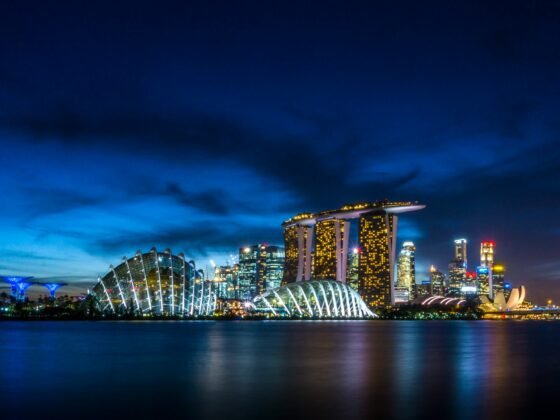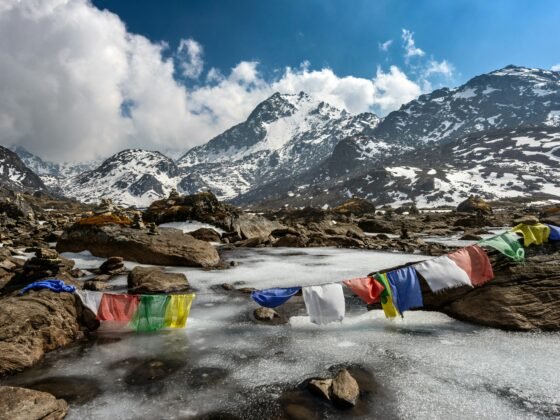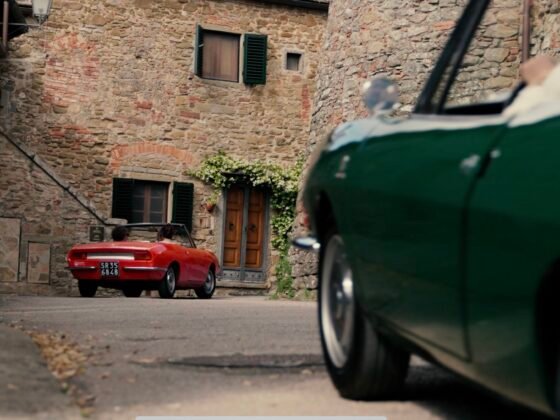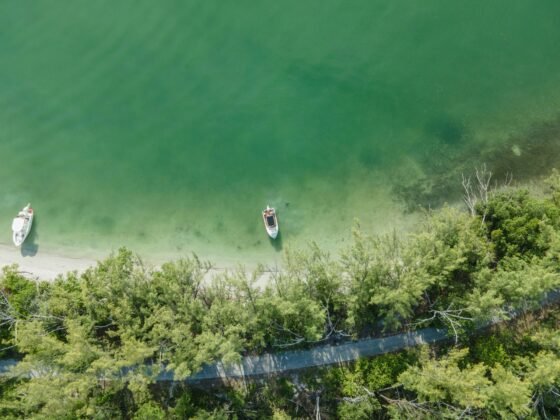Sweden Adventure Travel Guide: Ideas and Inspiration
PureTravel Says: "Sweden is most famous for its Lapland adventures, visits to Father Christmas and its Ice hotels. It also offers excellent watersports such as sailing and canoeing on its maze of lake, rivers and long coastline. Add in winter sports, including things like dog-sledging and ice-fishing, hiking and cycling and it becomes a top holiday destination still comparatively undiscovered by outside tourism."
-----------------------------------------------------------
Holiday Highlights
Visits to Lapland - The north of Sweden includes Lapland, the traditional home of the Sami people. This snow-clad area offers a wealth of holiday options, from reindeer sledding, dog-sledging, ice-fishing and cultural tours. The dog-sledging can be done as a day-trip or on trips that can last up to two weeks. A more modern twist on this can be done on snow-mobiles that will take you out on expeditions into the wilderness. One thing to always look out for is the Northern Lights, the light display in the sky caused by the solar winds being pulled in by the earth's magnetic field. It is one of the greatest sights on earth.
Walking, Hiking & Trekking - Sweden has over 400 marked walking trails, and an infrastructure of camp sites, hostels and hotels that’s allows the visitor to plan their route for the duration of their trip. Stunning coastal and mountain scenery covers the country, with Laponia World Heritage site in Swedish Lapland and the Sarek National Park being two highlights.
Sailing - With over 3,000 km of coastline and tens of thousands of small islands and coves, sailing in Sweden is a popular pastime. Boats can be chartered locally, with or without a skipper, and many islands have cottages, hotels and inns that can be used to chart a great holiday itinerary.
Kayaking & Canoeing - As with sailing, the possibilities are endless for exploration of the coast and lakes. For lovers of white-water there are plenty of graded rivers, rising up to grade 4 in severity. The province of Värmland is particularly popular, with its large network of lakes, rivers and canals.
Cycling - Sweden is a cycle-friendly country, with many km of cycle paths. Its flatter southern provinces are excellent for touring, especially with their higher population density making sure you are never too far from a café or bar! Other areas are more mountainous and remote and trips to areas like Norrland need to be planned in advance. There is also a cycle path beside the Göta Canal which is obviously of gentle gradient but offering lovely countryside.
Boating and Canal Holidays - With the system of lakes and rivers there are plenty of options for a relaxing boating holiday. There is also the Göta canal, a 190 km long construction with 58 locks. Throw in the lakes it passes through, and here is an interesting one week holiday to be enjoyed while the canal is open to commercial traffic in the summer.
-----------------------------------------------------------
When To Go
Summertime pursuits are best enjoyed from June to September when temperatures are mild and the days are long. Average July temperatures range from 55 – 65 degrees Fahrenheit (13 – 18 degrees Celsius), and daylight lasts anywhere from 17 hours in the south, to 24 hours in the north where one can experience the “midnight sun”.
For winter sports, aim for November to April and, expect January to bring temperatures of 3.2 F (-16 C) in the north, with almost no daylight hours at all, to 32 F (0 C) elsewhere, with only 6 – 7 hours of actual daylight.
-----------------------------------------------------------
Top Tips
- Bring a GSM or 3G mobile phone – Sweden has remote areas and in an emergency its best to contact help quickly due to the climate
- Bring a power converter and adaptor for electronics (for the European standard 230 volt 50Hz current, and Schuko style two prong outlets)
- Don’t forget the mosquito repellent (particularly in the summer months)
- Dress correctly for the season: rain gear or layers of clothing; heavy winter gear for the snow months
-----------------------------------------------------------
Holidays In Focus
Sailing - Sailors will be challenged by the ever-present and shifting on- and off-shore winds and the scenery of Sweden’s 3,000 km of rocky coastline. Dotted with thousands of tiny islands and as many as 5 archipelagos, sailors can explore bays and inlets, skerries and islands and enjoy sandy beaches and overnight stays in summer cottages, or “stuga”.
Sailing and yacht charters are generally available in the summer months from June to September. The Stockholm Archipelago, consisting of 24,000 islands off the east coast of the country close to the Swedish capital city, is an excellent location for sailing. While some islands are deserted, others are home to charming restaurants, hotels and quaint boutiques. Further south of Stockholm’s Archipelago is the island of Gotland, with breathtaking natural scenery and beautiful beaches.
Experienced sailors with keen navigation skills may prefer exploring the thousands of islands and rocky bays that are sprinkled along the west coast from Sweden’s second largest city, Gothenburg, all the way to the Norwegian capital of Oslo. In these waters, vacationers will discover nature, unspoiled landscapes, solitude and an occasional fishing village.
Kayaking and Canoeing - Ocean kayakers will be captivated by the hundreds of routes that thread between the islands in the archipelagos off the east coast near Stockholm and the west coast, close to Gothenburg. Inland, Sweden’s many rivers and streams offer a true nature-friendly form of travel, and canoers and kayakers can paddle between numerous campsites, touring the bucolic countryside from the water. Thrill seekers will want to try whitewater rafting on rapids rated up to Class 4.
Many of the most popular canoeing itineraries are found in the province of Värmland, in western Sweden, where rivers and streams pass through networks of lakes, numerous tributaries and old logging routes. Among them are Bergslagen, Klarläven (Clear River) and Svartläven (Black River). Canoers can encounter wildlife including beaver, lynx, brown bear, wolves, moose, roe deer and many varieties of birds. For longer canoe expeditions, a guided tour is recommended, as operators furnish canoe wagons to carry gear and equipment over land crossings.
Canal and Boating Holidays - Sweden is home to nearly 100,000 lakes, many of which are connected by a series of canals and locks. One of the most impressive of these canals is the Göta Kanal, considered Sweden’s greatest feat of civil engineering. Opened in 1832 after 22 years of excavation and construction, the canal measures 190 km in length and contains 58 locks. During the summer months, the Göta Canal is open to motorboat and sailboat boat traffic. Pleasure boats are available for rent, and passenger boat tours and charters are also offered. To travel the canal from end to end (from Stockholm to Gothenburg), allow at least 5 to 6 days – even more to explore the larger lakes of Vänern and Vättern where several natural harbours and more than a few good guest harbours make a nice place to tie up or anchor out for an afternoon or an overnight.
For anglers, Sweden’s unpolluted waters, pristine rivers and clear lakes are ideal for bait, fly and spin fishing, and - in the wintertime - ice fishing with gigging gear. Those wishing to fish should inquire about necessary licenses and permits.
Cycling - Sweden boasts numerous bike paths and bike friendly areas, as well as a multitude of open land, gravel tracks and back country areas where an experienced and adventurous cyclist can navigate an itinerary with a good map and a compass.
Popular areas include the island of Gotland, off the east coast, with a flat landscape and numerous hostels, hotels and restaurants. Longer routes stretch along the east coast from Ystad to Haparanda, through central Sweden alongside the Göta canal, and along the High Coast area through one of UNESCO’s World Heritage locations. While southern Sweden is the most family-friendly biking area since distances between towns are shorter, those wishing to forego civilization and surround themselves by nature will prefer cycling in Norrland.
Bike operators offer organized packages including bike rentals, meals, accommodations, and guides. If a guided, group tour is too structured and tame for you, bicycles, child seats, and trailers are also available for rent.
Hiking and Walking - Most of Sweden’s nearly 400 hiking and trekking trails are clearly marked, with hostels, cabins and huts available for overnight stays along the way. Whereas some trails travel over even terrain through rural settlements, others more suitable to experienced hikers traverse vast and remote landscapes with breathtaking views and rugged scenery. Of note are the Kungsleden (King’s trail), which winds 450 km from the Abisko National Park to Hemavan, passing Mount Kebnekaise (Sweden’s highest mountain) along the way. Also worthy of mention are Bergslagen in Värmland province, the High Coast and the island of Gotland. The Laponia World Heritage site, home to the Sami people of Swedish Lapland, and the Sarek National Park are among the finest locations in the world for foot travel.
Lapland - Swedish Lapland lies in the northern reaches of Sweden, where the Sami people live, tending and herding reindeer as they have for thousands of years. This area also contains the Sarek National Park, considered to be the last expanse of open wilderness remaining in Europe. While Lapland can be warm and pleasant in the summer months, extreme wintertime temperatures give the words “arctic chill” a new meaning! Guided reindeer treks are a unique way to explore this part of the country by foot, while letting the reindeer carry the camping gear and tents! Visitors will hike alongside glacial tarns, fly fish in mountain lakes and rivers and learn about the Sami way of life.
For travelers not opposed to a little (or a lot of) snow and wanting a truly exhilarating experience, adventure tours are offered in the remote wilderness of northern Sweden, including dog sledding, snowshoeing, snowmobiling and cross country skiing expeditions. Experiences include sleeping in a lavvu (Sami teepee), ice fishing and dining around an open fire. Lucky visitors may even witness the Aurora Borealis, or Northern Lights, that dance across the sky when conditions permit. For best viewing, travel above the Arctic Circle from September to March. Locals say that the light show is sometimes accompanied by a strange sound, similar to the crackling of a wood fire, and lore attributes this supposed noise to the death throes of a dragon!
As an alternative to camping and for more luxurious accommodations, book a stay at the Icehotel in Jukkasjärvi, which is constructed each winter from ice taken from the nearby river, only to melt again each spring.
-----------------------------------------------------------
Classic Itineraries
- Sail, cruise or cycle along the Göta Canal
- Sail or kayak through the archipelagos off the east or west coast of the country
- Hike and camp on the island of Gotland
- Canoe a circuit of rivers, streams and lakes in Värmland
- Reindeer trek with the Sami people in Swedish Lapland; end your stay with a visit to the Icehotel
- Trek the Kungsleden (King’s Path), or hike in the Sarek National Park
-----------------------------------------------------------
Sweden Holidays Overview
Geography - Varying sources name Sweden as either the third or fourth largest country in western Europe, and all agree that it’s the largest of the Nordic countries of Scandinavia. Sharing borders with Norway to the west, Finland to the east and now connected to Denmark by the Öresund Bridge, Sweden is a long, narrow country similar in shape to California, that stretches from the Baltic Sea to the Arctic Circle. Once home to ruthless Vikings, and later a formidable military power, Sweden has enjoyed centuries of peace and economic stability, and the standard of living and life expectancy are among the highest in the world.
Weather - The mild, sunny summers are ideal for water sports, hiking and cycling, whereas the cold and snowy winters provide perfect conditions for dog sledding, snowshoeing, snowmobiling and cross-country skiing!
Culture - As with other northern Europeans, Swedes have a reputation of being practical, stoic, efficient and productive people. Very family and community oriented, comparisons are often drawn between the people, and their well-known exports: Volvos and Ikea! Sweden is also the birthplace of Abba and Absolut Vodka, and hence it’s no surprise that the culture is fun-loving, with rich traditions in music and folk dance.
Sweden does not have an official language, but most Swedes speak Swedish – a Germanic language that is closely related to Norwegian, and similar to the Danish language. The Swedish word for Sweden is “Sverige”, pronounced “svair-yeh”. Luckily, most Swedes today speak excellent English!
Swedes are known as hearty, wholesome people who enjoy a wide variety of outdoor activities. For a country that measures 450,000 sq. kms (174,000 sq. miles), the majority of Sweden’s 9 million plus inhabitants live in the southern half of the country, allowing for wide stretches of open space where flora and fauna thrive undisturbed.
The country is dotted with forests interspersed with small fields of cultivated land, rolling meadows, bogs and rocky, craggy terrain. Camping, picnicking, berry and mushroom gathering are favourite pastimes of the Swedes.
Privacy is greatly respected in Sweden, and celebrities and public figures generally enjoy a fair amount of anonymity there. If Swedes initially give off the impression of being shy, reserved or aloof, it’s likely because they are waiting for visitors to make the first move and engage them in conversation. Once the ice is broken, you’ll find Swedes to be gregarious, friendly and generous people who are eager to share advice and information.
Sweden Know Before You Go - Sweden is a member of the European Union and a valid EU or North American passport entitles visitors to a 90 day stay in the country. Citizens of other countries should check with the Swedish embassy or consulate in their home country regarding entry requirements and visas.
Currency - The monetary unit is the Swedish “krona” (SEK), which equals 100 öre. Since 1 krona currently equals approximately .13 USD and .9 EUR, and since Sweden tends to be a fairly expensive destination, it will be handy to know that the plural of “krona” is “kronor”. Credit cards are widely accepted, and ATM machines and banks are easily found.
Time - Sweden is in the central European time zone (CET), which is UTC/GMT + 1 hour, and follows the European daylight savings time schedule.
Travel:
Areas - Sweden is approximately 1,500 km (975 miles) long, and 500 km (300 miles) wide, and is divided into three regions and within them, provinces. The three regions are vast and varied:
Norrland: northern Sweden, making up about 2/3 of the country’s total area and stretching into the Arctic Circle; a sparsely populated wilderness of forests, lakes and rivers.
Svealand: central Sweden, including the capital city of Stockholm.
Götaland: southern Sweden, including Gothenburg, the islands of Öland and Gotland.
Travel - Most major carriers offer regular flights into the country’s large international airports which are located near its two principal cities: Arlanda airport (ARN) on the east coast by the capital city of Stockholm, and Landvetter airport (GOT) on the west coast, near Gothenburg. Two other options to consider are Denmark’s Kastrup airport (CPH), located in Copenhagen, and Norway’s Oslo airport (OSL), which ironically, are closer to some parts of the country than Sweden’s own airports.
Internally, the transportation system is organized and efficient, and visitors will find travelling by train, bus, boat and car to be convenient and enjoyable. While domestic flights can be pricey, they’re probably the best option when travelling to the far north such as the city of Kiruna, situated in Swedish Lapland. The flying time from Stockholm to Kiruna is approximately 1.5 hours.
-----------------------------------------------------------
Regions and Cities
Sweden is divided into three main regions:
Norrland - This northern part of the country is sparsely populated yet spans more than half the total area. The eco destination of choice thanks to the pristine wilderness of deep forests, vast lakes, big rivers, expansive marshes and towering mountains which lead over to the border with Norway. Adventurers should make this their first port of call for superb hiking in spring, summer and autumn and a myriad of sports activities come winter. The largest cities in this region are Gävle, Sundsvall, Umea (European Capital of Culture 2014) and Luleå.
Svealand - The central region of Sweden is home to the larger cities of Stockholm, Uppsala and also the provinces of Dalarna, Närke, Värmland, Södermanland, Uppland and Västmanland.
Götaland - The most southernmost region is home to ten provinces, including the the two islands of Öland and Gotland. Notable cities include Gothenburg and Malmo, which is notable for its hosting of the Eurovision Song Contest.
Cities
Stockholm - The capital city of Sweden is also its largest, famed for its naturally beautiful landscapes and incredible archipelago. The city boasts unique nightlife, fabulous restaurants and a diverse culture.
-----------------------------------------------------------
UNESCO World Heritage Sites
- Royal Domain of Drottningholm
- Birka and Hovgården
- Engelsberg Ironworks
- Rock Carvings in Tanum
- Skogskyrkogården
- Hanseatic Town of Visby
- Church Village of Gammelstad, Luleå
- Laponian Area
- Naval Port of Karlskrona
- Agricultural Landscape of Southern Öland
- High Coast / Kvarken Archipelago
- Mining Area of the Great Copper Mountain in Falun
- Varberg Radio Station
- Struve Geodetic Arc
- Decorated Farmhouses of Hälsingland
-----------------------------------------------------------
Festivals, Events and Anniversaries in 2014
This year the city of Umea in Sweden hosts the European Capital of Culture 2014. The Swedish town of Umea in the northern region of Norrland kicks off the European Capital of Culture honour in style with a three day opening weekend set around its motto for the event; curiosity and passion. Umea, which has a lively atmosphere thanks to a vibrant student population, promises a non-stop party throughout the year.
-----------------------------------------------------------
Public Holidays in 2014
January 1 - New Year´s Day
January 06 - Epiphany
April 18 - Good Friday
April 21 - Easter Monday
May 1 - Labour Day
May 29 - Ascension Day
June 6 - Swedish National Holiday
June 21 - Midsummer day
November 1 - All Saints' Day
December 25 - Christmas
December 26 - St. Stephen´s Day
-----------------------------------------------------------










